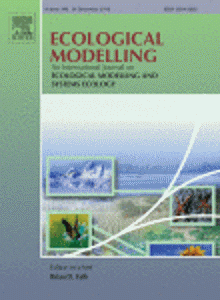 BUNTING, SOUTHWORTH – Utilization of the SAVANNA model to analyze future patterns of vegetation cover in Kruger National Park under changing climate
BUNTING, SOUTHWORTH – Utilization of the SAVANNA model to analyze future patterns of vegetation cover in Kruger National Park under changing climate
Erin L. Bunting, Timothy Fullman, Gregory Kiker, Jane Southworth
Article first published online: 17 OCT 2016 Ecological Modelling
DOI: 10.1016/j.ecolmodel.2016.09.012
ABSTRACT:
Within southern Africa’s savanna ecosystems, woody and herbaceous species have differing growth characteristics that allow a tenuous co-existance. The high dependence of humans on the landscape, through agricultural production, tourism, and natural resource extraction makes understanding savanna vegetation dynamics essential. Studies analyzing resilience of savannas suggest potential state changes in vegetation structure from continuous grasslands with sporadic woody cover to less biologically productive landscapes. One of the biggest questions in this landscape is the impact of climate change. The spatially explicit SAVANNA model is used to analyze the impact of climate change on vegetation cover across Kruger National Park’s (KNP) main land system classifications (Satara, Skukuza, Letaba, and Phalaborwa). Manipulating climate inputs and management regimes allowed us to analyze the resilience of savanna vegetation under multiple Intergovernmental Panel on Climate Change (IPCC) scenarios. Trends in future climate indicate an increase in temperatures greater than 1.0 °Celsius and a slight decrease in precipitation by 2080. Model results indicate a long-term decrease in multiple size classes of vegetation across all the four land systems. However, the model runs show differing response to climate change between the woody and herbaceous cover types. Spatial trends across the park follow closely with the north-south climate gradient. The most spatially distinct land system was Skukuza, which exhibited some of the highest initial net primary production (NPP) values and also the greatest decreases in NPP into the future. While this region is projected to lose large proportions of its herbaceous and shrub vegetation it is projected to increase in tree green leaf, mostly related to increasing fine leaf vegetation (Acacia sp.). The northern land systems were already dominated by mopane, but under all model scenarios mopane will increase in Letaba and Phalaborwa. This mopane increase will offset the loss of herbaceous and shrub vegetation, resulting in little to no decrease in NPP across time for these land systems. This work illustrates that landscape resilience is not only impacted by the severity of changing climate but the degree to which we manage such systems.
Read the full publication at Ecological Modelling